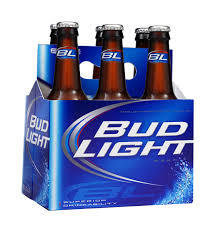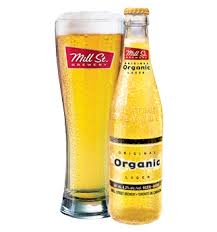Anyone who spends any time doing beer education – hell, anyone with a cousin or uncle – knows that the trick to getting a mainstream lager drinker to be open to craft beer is to take it slowly. Offering a Coors Light drinker a bottle of Red Racer IPA is only going to end in tears (likely yours as you watch the bulk of the can spiral down the drain). In my opinion it is the height of arrogance to think that by sheer will and heft of beer knowledge we can transform another human beings’ taste buds over night.
For me personally, I work with two core principles. First, my job is to help people find which kind of beer they like and understand why, so they can become self-directed in their beer journey. It is not my job to say which styles are “better” or more “sophisticated”. If someone likes fruit beer, so be it. My job is to identify why they like fruit beer and work with them to find good examples of fruit beer.
Second, I take them for where they are, not where I want them to be. This means acknowledging their current choice is valid and then offering up beer that are similar but a step removed from what they currently drink. This approach allows for progress and change, but at a pace that they can control.
Sure, there are exceptions. I remember leading a guided tasting a while back and on devout pale lager drinker discovered he was a huge fan of Belgian Abbey ales. He jumped from Stella to Westmalle Tripel in one swoop. Sure, cool story, but undoubtedly the exception. More often a pale lager drinker finds they like a hoppier pilsner or an amber lager and then we go from there.
All of this is my usual rambling preamble to my most recent Planet S/Prairie Dog column (which you can read here). It is the first of a (for now) two-part series on finding craft replacements for common macro beer. This article looks that the standard pale lager offerings and makes some suggestions for a craft alternative.
None of the options are particularly surprising. Mill Street Organic, Creemore Springs, Steam Whistle, Unibroue Ephemere and some others. All are light bodied lagers but you will find they all offer a bit more flavour to slowly edge the drinkers palate. I make specific pairing suggestions (e.g. Bud Light to Mill Street Organic) but don’t read too much into that. I am well aware the flavour range between Canadian, Keith’s, Lethbridge Pils, Corona and the like is a very narrow one. Making one-for-one swaps was just a more efficient way to write it. Any of the beer listed could work as a suitable replacement for any standard macro pale lager.
In the next column I look at some of the other macro-offerings that are ubiquitous in bars and liquor stores. Then after that, who knows?



June 11, 2014 at 12:52 PM
You’ve eloquently and precisely illustrated the distinction between beer advocacy and beer snobbery. Well done!
June 12, 2014 at 9:55 AM
You stated “Budweiser is Canada’s biggest-selling brand, and its corn base gives it an original flavour, relatively speaking.”
It might be interesting to note that it is also (at least) 40% rice. This comes from a former Labatt employee who now works for us.
June 12, 2014 at 10:46 AM
Greg, I had to go back to the article to figure out what you meant. That is a typo. I am quite aware that Bud is made with rice – that was supposed to be the point of that sentence. So clearly either I or the editor screwed up somewhere. My apologies – when reading the article replace “corn” for “rice” in your mind’s eye.
June 13, 2014 at 3:12 PM
The next article is to suggest the next steps (are there 12?) for each of these to broaden the palettes of those who want to go further away from the macro-brews.